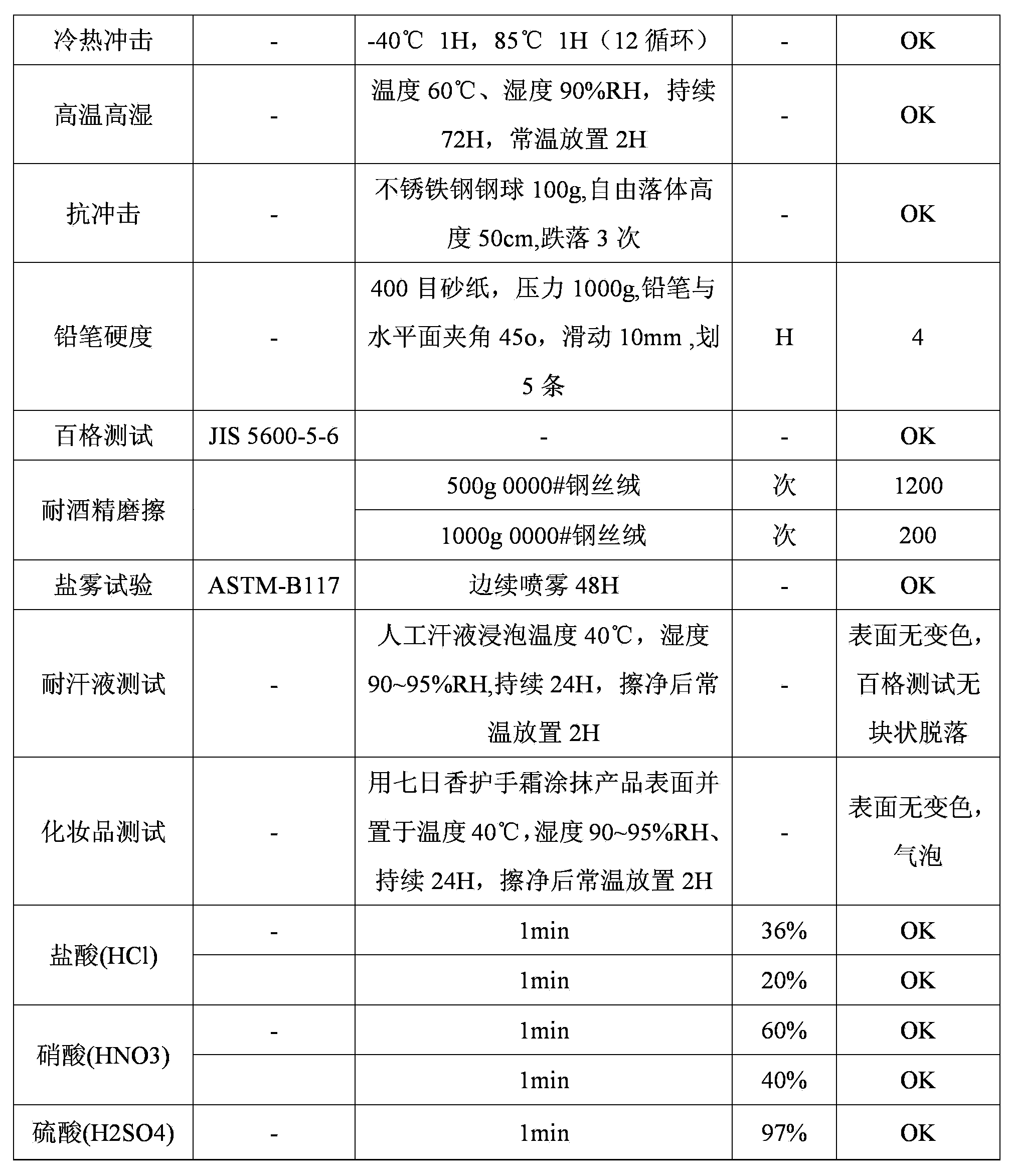Acrylic-modified organosilicon nano paint and preparation method thereof
A nano-coating, acrylic technology, applied in the direction of coating, can solve the problems of AB two-component unfavorable storage stability, use, low transparency, etc., to avoid storage stability problems, prolong system stability, and improve the effect of brittleness
- Summary
- Abstract
- Description
- Claims
- Application Information
AI Technical Summary
Problems solved by technology
Method used
Image
Examples
Embodiment 1
[0029] Vinyl triethoxysilane 20g, pentaerythritol triacrylate 2g, pentaerythritol tetraacrylate 2g, epoxy glycidyl acrylate 6g, methyl acrylate 5g, hydroxyethyl methacrylate 5g, acrylic acid 10g, isopropanol 25g Added to the three-necked flask in turn, mechanically stirred to disperse evenly. Place the three flasks in a constant temperature water bath and raise the temperature to 80°C, and drop 25 g of 2% azobisisobutyronitrile / isopropanol solution within half an hour to initiate free radical polymerization. After reflux for 2 h, tetramethylammonium hydroxide was added to neutralize the reaction product until the pH value was 7.0. Filter to remove impurities and precipitates, and add isopropanol to adjust the solid content to 50%, which is the acrylic acid-modified silicone prepolymer solution.
[0030] Add 10 g of acrylic modified silicone prepolymer solution, 20 g of tetraethyl orthosilicate, 12 g of γ-glycidyl etheroxypropyltrimethoxysilane, 2 g of dimethyldiethoxysilane, ...
Embodiment 2
[0036] Add 20g of 3-(methacryloyloxy)propyltrimethoxysilane, 10g of methyl methacrylate, 10g of hydroxyethyl acrylate, 10g of acrylic acid, and 25g of isopropanol into a three-necked flask in sequence, and mechanically stir to disperse evenly. The three flasks were placed in a constant temperature water bath and the temperature was raised to 70°C, and 2% dibenzoyl peroxide / isopropanol solution was added dropwise to initiate free radical polymerization. After reflux reaction for 2 h, ethylamine was added to neutralize the pH value of the reaction product to 6.5. Filter to remove impurities and precipitates, and collect the filtrate for future use, which is the acrylic acid-modified silicone prepolymer solution.
[0037] Add 20 g of acrylic modified silicone prepolymer solution, 20 g of tetraethyl orthosilicate, 12 g of KH560 silane, 2 g of dimethyl diethyl ester, 12 g of deionized water, 24 g of isopropanol, and 0.5 g of glacial acetic acid into the three-necked flask in sequen...
Embodiment 3
[0040] Add 20g of tetramethyl orthosilicate, 12g of methyltriethoxysilane, 2g of dimethyldimethoxysilane, 12g of deionized water, 36g of isopropanol, 0.5g of glacial acetic acid, and nano-oxidized 15g of silica sol, after being fully stirred evenly, the temperature was raised to 50°C for hydrolysis reaction, and the reaction time was 3h. Then stand at room temperature of 20°C for 4-7d to carry out aging reaction. Add isopropanol and defoamer BYK094, and adjust the solid content to 10% to obtain the coating.
[0041] A polycarbonate sheet with a thickness of 0.5mm was cleaned, pre-dried, sprayed, dried, and finally cured at 120°C for 2h. Under the load of 1000 grams force, the measured 1H. The surface of the coating has many defects, such as pits, orange peel and fine lines.
PUM
| Property | Measurement | Unit |
|---|---|---|
| hardness | aaaaa | aaaaa |
Abstract
Description
Claims
Application Information
 Login to View More
Login to View More - R&D
- Intellectual Property
- Life Sciences
- Materials
- Tech Scout
- Unparalleled Data Quality
- Higher Quality Content
- 60% Fewer Hallucinations
Browse by: Latest US Patents, China's latest patents, Technical Efficacy Thesaurus, Application Domain, Technology Topic, Popular Technical Reports.
© 2025 PatSnap. All rights reserved.Legal|Privacy policy|Modern Slavery Act Transparency Statement|Sitemap|About US| Contact US: help@patsnap.com


